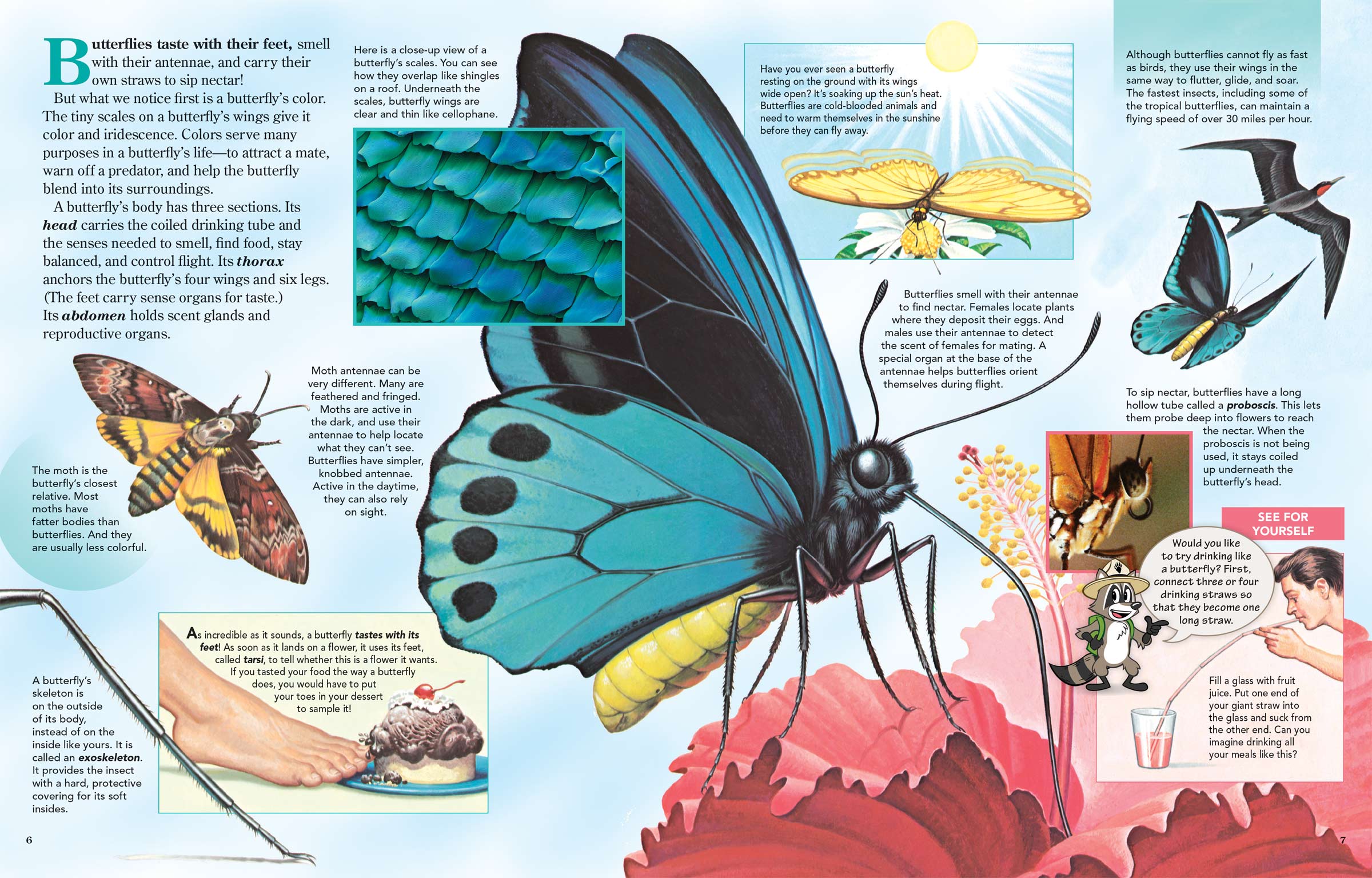
Butterflies Taste With Their Feet!
ByButterflies taste with their feet, smell with their antennae, and carry their own straws to sip nectar!
But what we notice first is a butterfly’s color. The tiny scales on a butterfly’s wings give it color and iridescence. Colors serve many purposes in a butterfly’s life—to attract a mate, warn off a predator, and help the butterfly blend into its surroundings.
A butterfly’s body has three sections. Its head carries the coiled drinking tube and the senses needed to smell, find food, stay balanced, and control flight. Its thorax anchors the butterfly’s four wings and six legs. (The feet carry sense organs for taste.) Its abdomen holds scent glands and reproductive organs.
Here is a close-up view of a butterfly’s scales. You can see how they overlap like shingles on a roof. Underneath the scales, butterfly wings are clear and thin like cellophane.
The moth is the butterfly’s closest relative. Most moths have fatter bodies than butterflies. And they are usually less colorful.
Moth antennae can be very different. Many are feathered and fringed. Moths are active in the dark, and use their antennae to help locate what they can’t see. Butterflies have simpler, knobbed antennae. Active in the daytime, they can also rely on sight.
A butterfly’s skeleton is on the outside of its body, instead of on the inside like yours. It is called an exoskeleton. It provides the insect with a hard, protective covering for its soft insides.
As incredible as it sounds, a butterfly tastes with its feet! As soon as it lands on a flower, it uses its feet, called tarsi, to tell whether this is a flower it wants. If you tasted your food the way a butterfly does, you would have to put your toes in your dessert to sample it!
Have you ever seen a butterfly resting on the ground with its wings wide open? It’s soaking up the sun’s heat. Butterflies are cold-blooded animals and need to warm themselves in the sunshine before they can fly away.
Although butterflies cannot fly as fast as birds, they use their wings in the same way to flutter, glide, and soar. The fastest insects, including some of the tropical butterflies, can maintain a flying speed of over 30 miles per hour.
Butterflies smell with their antennae to find nectar. Females locate plants where they deposit their eggs. And males use their antennae to detect the scent of females for mating. A special organ at the base of the antennae helps butterflies orient themselves during flight.
To sip nectar, butterflies have a long hollow tube called a proboscis. This lets them probe deep into flowers to reach the nectar. When the proboscis is not being used, it stays coiled up underneath the butterfly’s head.
SEE FOR YOURSELF
Would you like to try drinking like a butterfly? First, connect three or four drinking straws so that they become one long straw.
Fill a glass with fruit juice. Put one end of your giant straw into the glass and suck from the other end. Can you imagine drinking all your meals like this?

